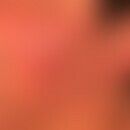Synonym(s)
HistoryThis section has been translated automatically.
Jadassohn, 1895; Robinson, 1932.
Jadassohn's nevus sebaceus, also known as organoid nevus, was described by dermatologist Josef Jadassohn in 1895.
DefinitionThis section has been translated automatically.
Organoid hamartoma of the skin (organoid epidermal nevus) affecting mainly the surface epithelium, hair follicles, and sebaceous and sweat glands. Clinically, most cases present with circumscripital alopecia until puberty with smooth skin texture and postpuberty with papillomatous transformation.
You might also be interested in
Occurrence/EpidemiologyThis section has been translated automatically.
In a larger study (Yang CC et al.), in 265 children (age 1-12 years) with capillitium neoplasms the sebaceous nevus was represented by 68%, followed by melanocytic nevi (6.2%) and juvenile xanthogranuloma (6.2%). Infant hemangiomas were found in 41% of this patient group.
EtiopathogenesisThis section has been translated automatically.
Underlying postzygotic (somatic) HRAS mutations (95%) and KRAS mutations(5%) (see below RAS) are regulatory genes encoding the RAS protein. This protein is a key regulator of various signal transduction pathways through which growth and differentiation processes are regulated (see also RASopathies)
ManifestationThis section has been translated automatically.
Congenital. Predominantly sporadic occurrence. Familial occurrence (very rare) has been reported (Benedetto L et al 1990; Sahl WJ Jr 1990) .
No gender bias.
LocalizationThis section has been translated automatically.
90% of the malformations affect the capillitium (about 45% the parietal region); more rarely in descending frequency the face, retroauricular region, neck, trunk or genitalia are affected. An absolute (negligible) rarity is the occurrence in the mucosal region.
ClinicThis section has been translated automatically.
Age-related clinical picture:
1st birth:
- At this time, depending on the localization, a solitary, completely asymptomatic, oval to bizarrely configured (elongated with cuspate extensions), whitish-yellowish or skin-colored, waxy, always hairless patch or a corresponding, slightly raised, surface-smooth plaque is seen. Since nevus sebaceus most frequently occurs on the capillitium, the most prominent clinical symptom is circumscribed hairlessness (alopecia). Important here is the clinical finding of"absence of follicles" (note: the follicular organs are absent in the area of the lesion, no formation of a hair follicle!).
2. childhood:
- No active area growth during childhood. Size growth analogous to body growth.
3. peripubertal:
- In the pubertal phase and later in younger adults, there is a growth in thickness of the usually completely asymptomatic skin change. Development of a still hairless, beet-like, warty plaque of now yellow-red or yellow-brown (sebaceous gland growth during puberty) color and spongy-firm consistency.
4. late adulthood:
- Increasingly verrucous surface configuration of the lesion, occasionally skin-colored or blue-black nodules (see complications below).
- Arrangement: Mostly bizarrely configured, also linear arrangement.
Syndromal Formations:
- Schimmelpenning-Feuerstein-Mims syndrome: In this syndrome, there is a neuroectodermal symptom complex with extensive nevus sebaceus (also multiple), malformations and dysplasias of the eyes, skin, brain, skeleton, and heart.
- SCALP syndrome: The syndrome describes a syndrome with the constellation: "Sebaceous nevus syndrome, central nervous system malformations, aplasia cutis congenita, limbal dermoid, and pigmented nevus syndrome (melanocytic giant nevus)".
- Didymosis aplasticosebacea: This refers to the very rare concordant coincidence of aplasia cutis circumscripta with a nevus sebaceus.
- Syndromal occurrence of a nevus sebaceus with a choristoma of the eye (Traboulsi EI et al. 1999).
HistologyThis section has been translated automatically.
Convolutes of malformed hair follicles with usually numerous, mature sebaceous gland lobules grouped in bunches around the usually dilated excretory duct. Proliferation of abortive, apocrine or also eccrine differentiated glands.
- Prepubertal: The surface epithelium is slightly acanthotic, immature sebaceous gland complexes and infundibulum structures are evident in the upper dermis. Hair roots and terminal hairs are completely absent.
- Postpubertal: Verrucous epidermal hyperplasia and powerful sebaceous gland complexes with variably developed apocrine glands are seen.
In a larger study of 168 cases, the following structures were detected with the following frequency (Kamyab-Hesari K et al. 2016).
Sebaceous gland hyperplasia (93.5%).
Primitive hair follicles (76.8%)
Ectopic apocrine glands (55.4%)
Abnormal ductal structures (24.8%)
Neoplastic formations (5.4%: trichoblastoma, trichilemmoma, syringocystadenoma papilliferum).
Differential diagnosisThis section has been translated automatically.
The differential diagnosis depends on the age of the patient (see clinical picture).
Infancy and early childhood:
- Alopecia areata: Pre-existing hair. Follicles preserved.
- Aplasia cutis congenita (ACC): At birth, frequent erosion or ulceration with consecutive scarring (this course is known to parents).
- Tinea capitis: acute onset; scaling, follicles preserved. Fungal detection.
Postpubertal:
- At this stage, clinical diagnosis is easy. Differentially, benign adnexal tumors should be considered.
Late adulthood:
- Benign or malignant adnexal tumors.
- Nodular basal cell carcinoma
- Malignant melanoma
- Merkel cell carcinoma
Complication(s)(associated diseasesThis section has been translated automatically.
In about 10-30% of cases, development of various benign but also malignant adnexal tumors, such as (percentages refer to neoplasms in 707 cases with nevus sebaceus, cited in Idriss MH et al.):
More frequently described were:
- Trichoblastoma (7.4%).
- syringocystadenoma (5.2%)
- basal cell carcinoma (2,5%)
- squamous cell carcinoma (0,5%)
Sporadically described was the association with:
- Hidradenoma
- epithelial cysts
- Spiradenoma
- sebaceous gland carcinoma.
TherapyThis section has been translated automatically.
Excision should be attempted at an age when children tolerate (possible) local anesthesia. Partial excision possible. For smaller hamartomas excision in toto. Here, the cosmetic aspect must also be taken into account! Controlled waiting" can also be accepted. In case of development of secondary tumours (90% are benign), their isolated excision (e.g. in very large organoid naevi) is also justified.
Progression/forecastThis section has been translated automatically.
Favourable; in a part of the hamartomas benign neoplasms of the adnexa such as trichoblastomas and syringocystadenomas develop. Less frequent is the development of malignant tumours such as basal cell carcinomas (a part of these cases published as basal cell carcinoma is to be addressed as trichoblastoma), ductal (apocrine) adenocarcinomas, porocarcinomas, sebaceous gland carcinomas, spinocellular carcinomas and keratoacanthomas.
Notice! Benign or malignant transformations are not to be expected until middle to high adulthood, not in childhood or adolescence.
LiteratureThis section has been translated automatically.
- Benedetto L et al.(1990) Familial nevus sebaceus.J Am Acad Dermatol 23:130-132.
- Happle R et al. (2001) Didymosis aplasticosebacea: coexistence of aplasia cutis congenita and nevus sebaceus may be explained as a twin spot phenomenon. Dermatology 202:246-248.
- Hügel H et al (2003) Ductal carcinoma arising from a syrigocystadenoma papilliferum in a nevus sebaceus of Jadassohn. Am J Dermatopathol 25: 490-493.
- Idriss MH et al (2014) Secondary neoplasms associated with nevus sebaceus of
- Jadassohn: a study of 707 cases. J Am Acad Dermatol 70: 332-337.
- Jaqueti G et al (2000) Trichoblastoma is the most common neoplasm developed in nevus sebaceus of Jadassohn: a clinicopathologic study of a series of 155 cases. Am J Dermatopathol 22: 108-118.
- Jadassohn J (1895) Remarks on the histology of systematized nevi and on "sebaceous nevi?". Arch Dermatol Syphil (Berlin) 88: 355-394.
- Kamyab-Hesari K et al (2016) Nevus sebaceus: a clinicopathological study of 168 cases and review of the literature. Int J Dermatol 55:193-200.
- Lam J et al (2008) SCALP syndrome: sebaceous nevus syndrome, CNS malformations, aplasia cutiscongenita, limbal dermoid, and pigmented nevus (giant congenital melanocytic nevus) with neurocutaneous melanosis: a distinct syndromic entity. J Am Acad Dermatol 58:884-888.
- Moody BR, Hurt MA (2004) Surgical management of the cutaneous manifestations of linear nevus sebaceus syndrome. Plast Reconstr Surg 113: 799-800
- Munoz-Perez MA et al (2002) Sebaceus naevi: a clinicopathologic study. J Eur Acad Dermatol Venereol 16: 319-324.
- Sahl WJ Jr (1990) Familial nevus sebaceus of Jadassohn: occurrence in three generations.
- J Am Acad Dermatol 22:853-854.
- Santibanez-Gallerani A et al (2003) Should Nevus Sebaceus of Jadassohn in Children be Excised? A Study of 757 Cases, and Literature Review. J Craniofac Surg 14: 658-660.
- Saphiro M et al (1999) Spiradenoma arising in nevus sebaceus of Jadasson: Case report and literature review. Arch J Dermatopathol 21: 462-467.
Traboulsi EI et al (1999) Posterior scleral choristoma in the organoid nevus syndrome (linear nevus sebaceus of Jadassohn). Ophthalmology 106:2126-2130.
Yang CC et al (2014) Neoplastic skin lesions of thescalp in children: a retrospective study of 265 cases in Taiwan. Eur J Dermatol24:70-75.
- Zutt M et al (2003) Schimmelpenning-Feuerstein-Mims syndrome with hypophosphatemic rickets. Dermatology 207: 72-76
Incoming links (25)
Adnextumors of the skin (overview); Aplasia cutis congenita (overview); Didymosis aplasticosebacea; Epidermal nevus organoid; hamartoma of the skin; Hras; Kras; Mosaik-RASopathies; Mould penning flintstone mims syndrome; Naevus; ... Show allOutgoing links (25)
Alopecia areata (overview); Aplasia cutis congenita (overview); Basal cell carcinoma nodular; Basal cell carcinoma (overview); Choristoma; Didymosis aplasticosebacea; Excision; Hamartom; Hidradenoma; Hidradenoma, cystic eccrine; ... Show allDisclaimer
Please ask your physician for a reliable diagnosis. This website is only meant as a reference.

























